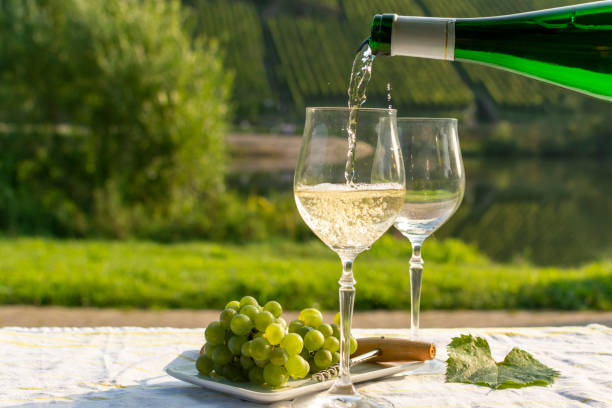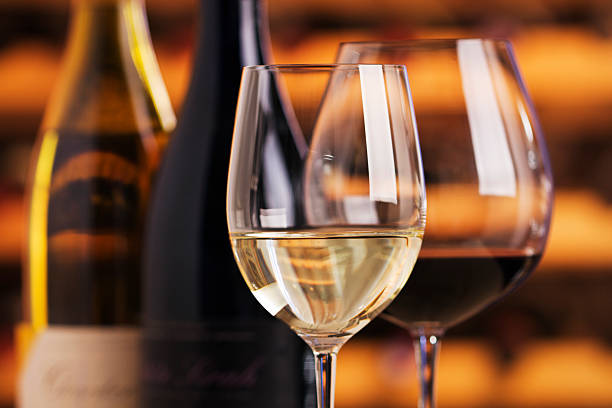Wine has long been a staple in culinary traditions around the world. Its depth of flavor and complexity can elevate even the simplest of dishes to gourmet heights. From soups and sauces to meats and desserts, incorporating wine into your cooking repertoire can add a touch of sophistication and depth that tantalizes the taste buds. In this guide, we’ll explore the art of cooking with wine, from selecting the right type to mastering cooking techniques that harness its full potential.
- Understanding Wine Varieties: Before delving into the world of cooking with wine, it’s essential to understand the different varieties available. Wine can be broadly categorized into red, white, rosé, and sparkling, each offering distinct flavor profiles and characteristics. Additionally, within each category, there are numerous grape varieties and regions, each contributing unique nuances to the final dish.
- Choosing the Right Wine: When selecting wine for cooking, it’s crucial to match the flavor profile of the wine with the ingredients and dish you’re preparing. For savory dishes such as stews and braises, opt for full-bodied red wines like Cabernet Sauvignon or Merlot, which add depth and richness. For lighter fare, such as seafood or poultry, a crisp white wine like Sauvignon Blanc or Chardonnay can complement the flavors without overpowering them. When in doubt, choose a wine that you would enjoy drinking on its own, as this will ensure a harmonious pairing with your dish.
- Cooking Techniques: Cooking with wine involves several techniques to extract the flavors and aromas while maintaining balance in the final dish. Here are some common methods:
a. Deglazing: After sautéing meat or vegetables, deglazing the pan with wine helps to loosen browned bits and incorporate their flavors into the sauce or gravy. Add a splash of wine to the hot pan and scrape up any stuck-on bits with a wooden spoon, allowing the wine to reduce and intensify in flavor.
b. Marinating: Wine-based marinades infuse meats and poultry with flavor while tenderizing them. Combine wine with aromatics such as garlic, herbs, and spices, and allow the protein to soak in the marinade for several hours or overnight before cooking.
c. Braising: Braising involves cooking meat or vegetables slowly in a liquid, often wine, until tender and flavorful. The wine adds richness and depth to the braising liquid, infusing the dish with complex flavors. Choose a wine that complements the ingredients and allows enough time for the flavors to meld together during the cooking process.
d. Sauces and Reductions: Wine-based sauces and reductions are a classic way to elevate dishes to restaurant-quality status. By simmering wine with aromatics and other ingredients, you can create luxurious sauces that complement everything from pasta to steak. Be sure to allow the wine to reduce sufficiently to concentrate its flavors and achieve the desired consistency.
- Pairing Wine with Food: Cooking with wine opens up endless possibilities for flavor combinations and pairings. When planning a meal, consider how the flavors of the wine will interact with the other ingredients on the plate. As a general rule, lighter dishes pair well with white or rosé wines, while heartier fare is best served with red wines. However, don’t be afraid to experiment with unconventional pairings to discover new flavor combinations and enhance your culinary creations.
- Tips for Cooking with Wine: To ensure success when cooking with wine, keep the following tips in mind:
a. Use quality wine: The quality of the wine you use will directly impact the flavor of your dish. Avoid using cooking wines with added salt or preservatives, as these can impart off-flavors to your food. Instead, opt for a wine that you would enjoy drinking, even if it means using a slightly cheaper bottle for cooking purposes.
b. Don’t oversaturate: While wine adds depth and complexity to dishes, it’s essential not to overpower the other flavors. Start with a small amount of wine and taste as you go, adding more if necessary to achieve the desired balance.
c. Be mindful of alcohol content: Alcohol evaporates during the cooking process, but some residual alcohol may remain depending on the cooking time and method. If serving to guests who may be sensitive to alcohol, consider simmering the dish for longer to ensure that most of the alcohol has evaporated.
d. Experiment and have fun: Cooking with wine is as much an art as it is a science. Don’t be afraid to experiment with different varieties and flavor combinations to discover what works best for your palate. With practice and patience, you’ll soon become adept at using wine to elevate your culinary creations.
Cooking with wine is a time-honored tradition that adds depth, complexity, and sophistication to dishes of all kinds. By understanding the various types of wine, mastering cooking techniques, and experimenting with flavor pairings, you can unlock a world of culinary possibilities. Whether you’re preparing a simple weeknight dinner or hosting a gourmet feast, incorporating wine into your cooking repertoire is sure to impress even the most discerning palate. So raise a glass and let the culinary alchemy begin! Cheers!




